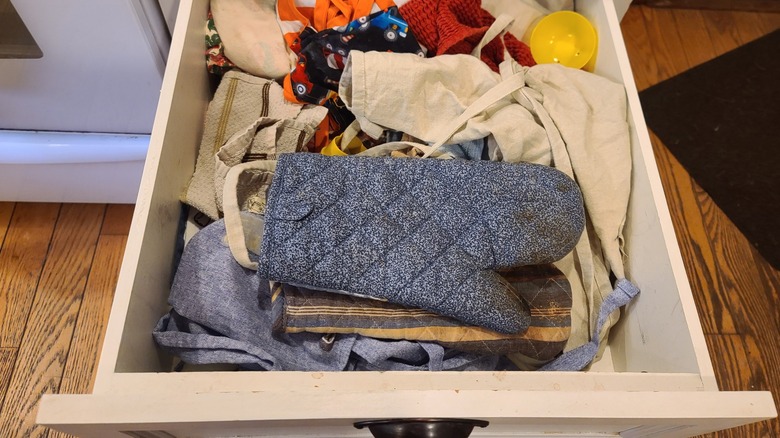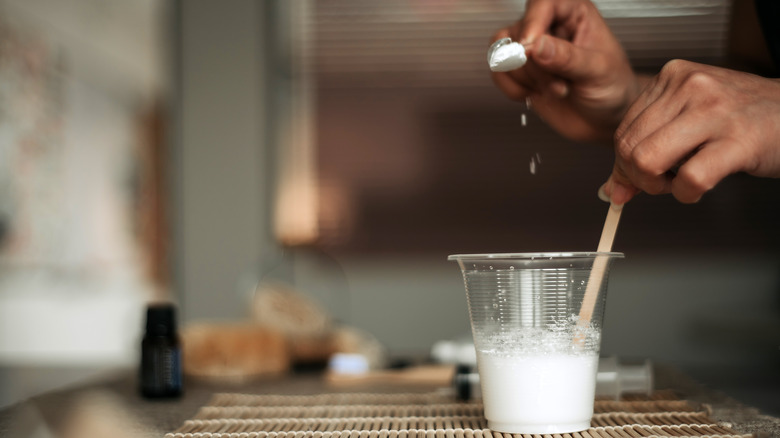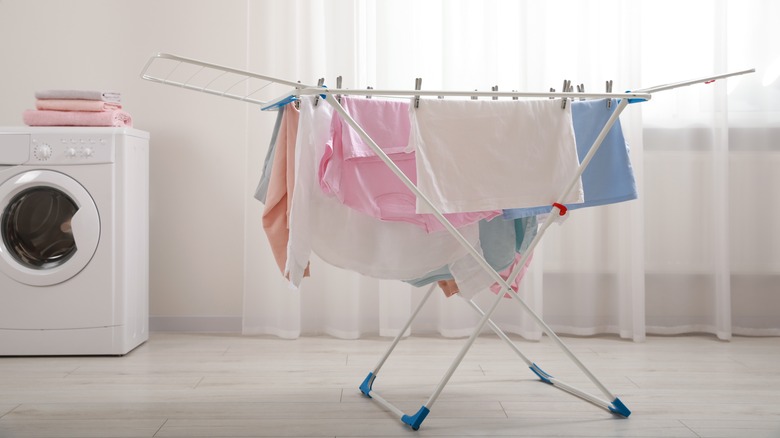Breathe New Life Into Your Well-Loved Dish Rags With A Handy Kitchen Ingredient
When you open up your drawer full of dish rags, do you see a lot of perfectly bright and fresh linens staring back at you? We doubt it. Dish rags take on a lot of wear and tear over the years, whether they're sopping up spaghetti sauce, getting doused in harsh cleaning products, or sitting damp at the bottom of the hamper for a few days (or weeks), it's no wonder they can look a bit worse for the wear. There's one kitchen and cleaning staple that can revive them, and it's probably already sitting in your cabinets. Baking soda is the perfect natural ingredient to solve your dish rag woes.
Baking soda, or sodium bicarbonate, can effectively clean the rags, free them from product and grime buildup, revive colors, remove stains, soften fabric, and eliminate any pesky mildew smell. How is it able to do all of this for your cleaning rags? Baking soda is uniquely suited to many cleaning purposes because it is alkaline, abrasive, and absorptive. Alkaline substances like baking soda work to neutralize acids, thereby eliminating organisms that thrive in acidic environments such as mildew and other fungi. Its abrasive, gritty texture also physically displaces grease and dirt buildup, as well as stains, by giving detergent an extra boost. Baking soda absorbs the foul odors left behind by mildew, and even excess water in the fabric, preventing mildew from coming back.
How to clean dish rags with baking soda
To restore your beloved dishcloths to their former glory, start with a baking soda spot treatment. This is ideal if you have some set stains or discoloration you want to address. Mix baking soda with a dash of water to form a thick paste, and apply it to the affected areas. Allow the baking soda to sit on these stains for at least 10 minutes before proceeding with laundering.
Bring a large pot of water to a boil on your stovetop. Once it's at a rolling boil, carefully place a few dishcloths in the water, using tongs or a ladle to submerge them. Then add ⅛ to ½ cup of baking soda and stir. Let the cloths boil for about 20 minutes before adding them to your washing machine tumbler. Just wash the dishcloths on a fabric-appropriate cycle. When it's finished be sure to give the dishcloths a quick once-over and smell check before putting them in the dryer or hanging them to dry.
How will I know if It's worked?
Afterward, you should be left with dishcloths that look much more like their original color and have absolutely no foul odor. A foul odor is a sign of residual mildew, and you will need to rewash the rags, potentially with another fungicide such as vinegar this time instead. Thanks to baking soda's alkalinity, which can reduce the hardness of water, the fabric should be noticeably softer when it's done drying, making it pleasant to the touch once more.
Proper cleaning with special ingredients like baking soda can go a long way to reviving and preserving the life of your dishcloths, though you may also need to use regular laundry detergent, lemon juice, salt, and so on to fully kill mildew. But with that being said, sometimes replacing them does become necessary, according to cleaning experts. If the odor remains after multiple washes, the fabric has developed holes and frayed edges, or if it's lost its absorption properties, it is time to toss the cloths out and invest in a new set. We advise changing these towels out every one to two years on average.


